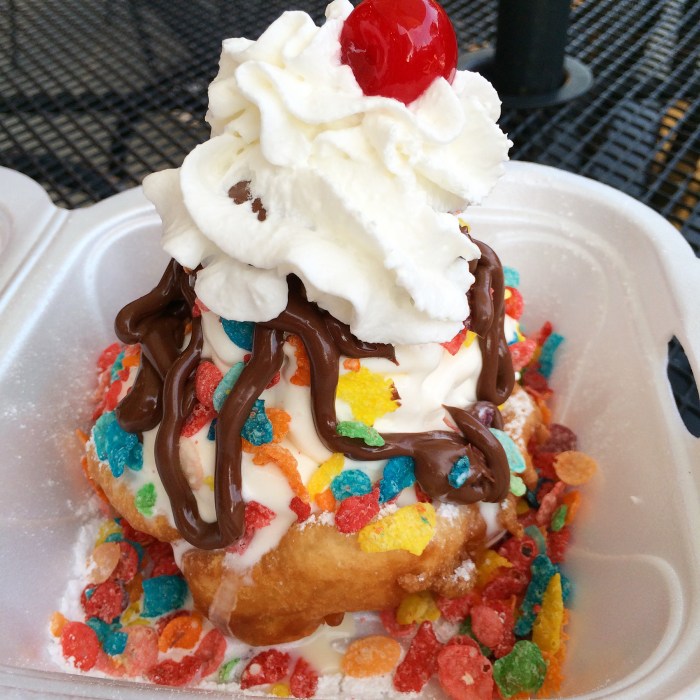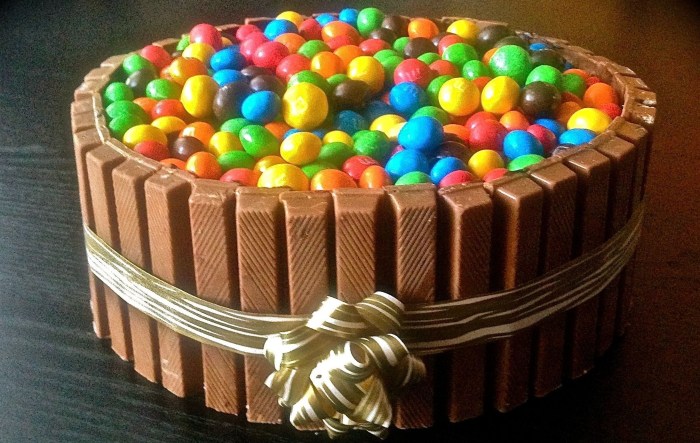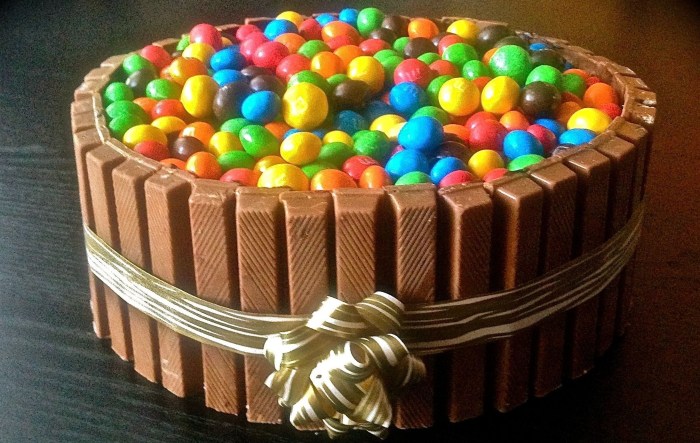Step into the realm of unusual sweets, where culinary boundaries blur and taste buds embark on an extraordinary adventure. From historical origins to global explorations and innovative techniques, this comprehensive guide unveils the fascinating world of sweets that defy expectations.
As we delve into the depths of unusual sweets, we’ll uncover their cultural influences, explore the fusion of savory and sweet flavors, and witness the artistry that transforms desserts into edible masterpieces. Prepare your palate for a journey of discovery, where the familiar gives way to the unexpected, and the boundaries of sweetness are pushed to new heights.
Historical Evolution of Unusual Sweets
Throughout history, cultures worldwide have experimented with diverse and peculiar sweet treats, reflecting culinary ingenuity and the quest for novel taste experiences.
Ancient Origins
The earliest forms of sweets, dating back to ancient times, often incorporated natural ingredients like honey, fruits, and nuts. In ancient Egypt, for instance, a sweet confection known as “honey cakes” was made from honey, flour, and spices.
Medieval Delicacies
During the Middle Ages, sugar became more widely available, leading to a surge in the creation of elaborate and unusual sweets. In Europe, confectioners experimented with spices, herbs, and exotic fruits to create intricate pastries, marzipan sculptures, and candied treats.
Global Influences
With the advent of global exploration, new ingredients and culinary techniques were introduced, further expanding the repertoire of unusual sweets. From the Americas came chocolate, which quickly became a favorite ingredient in Europe. In Asia, tea ceremonies incorporated delicate and unconventional sweets, such as mochi and wagashi.
Global Exploration of Peculiar Sweets
Embark on a culinary odyssey that unveils the enigmatic world of unusual sweets. From the vibrant streets of Asia to the charming cafes of Europe, a delectable tapestry of flavors and textures awaits discovery. Join us as we traverse the globe, savoring the stories and cultural nuances that intertwine with these extraordinary treats.
Across Asia
In the heart of Asia, a vibrant tapestry of unusual sweets tantalizes the palate. In Japan, mochi, delicate rice cakes with a chewy texture, are filled with an array of sweet and savory ingredients, from red bean paste to fresh fruit.
Thailand’s khao niew mamuang, a sticky rice dessert adorned with ripe mangoes, offers a delightful contrast of textures and flavors.
European Delights
Europe boasts a rich heritage of peculiar sweets. In France, macarons, delicate almond cookies with a colorful meringue filling, are a beloved indulgence. Germany’s baumkuchen, a layered cake with a distinctive tree-ring pattern, showcases the intricate artistry of German pastry chefs.
New World Flavors
The Americas have also contributed to the world of unusual sweets. In Mexico, churros, crispy fried dough dusted with cinnamon and sugar, are a popular street food. Brazil’s brigadeiro, a decadent chocolate truffle made with condensed milk, is a staple at parties and celebrations.
Molecular Gastronomy and Unusual Sweets
Molecular gastronomy, a scientific discipline that explores the physical and chemical transformations of ingredients during cooking, has revolutionized the culinary landscape, including the creation of unusual sweets. This approach utilizes innovative techniques to manipulate the texture, flavor, and appearance of traditional desserts, resulting in novel and unexpected sweet experiences.
Spherification
Spherification is a technique that transforms liquids into spherical droplets by encapsulating them in a thin membrane made of sodium alginate and calcium chloride. This process creates bite-sized orbs with a liquid center, offering a burst of flavor upon consumption.
Examples include “caviar” made from fruit juices or balsamic vinegar.
Foams
Molecular gastronomy employs various methods to create foams, which are airy and light structures formed by trapping gas bubbles in a liquid or semi-solid. These foams can enhance the texture and presentation of desserts, adding a delicate and ephemeral element.
One notable example is the use of nitrous oxide to create whipped cream with a smooth and velvety texture.
Other Innovative Methods
Beyond spherification and foams, molecular gastronomy encompasses a wide range of innovative techniques to transform traditional sweets. These include:
- Sous vide:Cooking ingredients in a vacuum-sealed bag at precisely controlled temperatures, resulting in tender and evenly cooked desserts.
- Freeze-drying:Removing moisture from ingredients through sublimation, creating lightweight and crispy textures, as in freeze-dried fruit or meringue.
- Emulsification:Combining two immiscible liquids (such as oil and water) into a stable mixture, enhancing the texture and flavor of desserts, as in ice cream or mayonnaise.
The application of molecular gastronomy techniques has significantly expanded the possibilities for creating unusual sweets. These novel desserts challenge traditional notions of texture, flavor, and presentation, offering a unique and memorable culinary experience.
Savory-Sweet Combinations in Unusual Sweets
The culinary landscape is constantly evolving, and one intriguing trend that has emerged in recent years is the blending of savory and sweet flavors in dessert creations. This unexpected combination challenges traditional notions of taste and offers a unique and tantalizing experience for food enthusiasts.
The balance and harmony achieved in these unusual combinations is crucial. The savory elements add depth and complexity, while the sweet components provide a contrasting sweetness that complements and enhances the overall flavor profile. This interplay creates a symphony of flavors that dances on the palate, leaving a lasting impression.
Examples of Savory-Sweet Desserts
- Salted Caramel Chocolate: A classic example that combines the salty tang of sea salt with the rich sweetness of caramel and chocolate, creating a delectable balance of flavors.
- Goat Cheese and Honey Tart: A sophisticated dessert that pairs the tangy creaminess of goat cheese with the natural sweetness of honey, resulting in a harmonious and unexpected combination.
- Bacon Maple Donuts: A playful twist on a classic treat, these donuts incorporate the smoky savoriness of bacon with the sweet indulgence of maple glaze, offering a unique and irresistible flavor experience.
The reception of savory-sweet desserts by food enthusiasts has been overwhelmingly positive. These creations have garnered praise for their innovative flavor combinations, challenging traditional dessert norms and expanding the boundaries of culinary creativity. As a result, they have become popular menu items in restaurants and bakeries, as well as sought-after treats at food festivals and special events.
Texture Exploration in Unusual Sweets
Texture plays a crucial role in creating distinctive and memorable sweet experiences. It adds depth and complexity to the overall flavor profile, enhancing the enjoyment and satisfaction derived from consuming sweets.
Unusual sweets often showcase innovative texture combinations, utilizing contrasting textures to create a multi-sensory experience. These combinations can range from crispy to chewy, smooth to crunchy, and everything in between.
Examples of Unusual Sweets with Innovative Texture Combinations
- Mochi ice cream: A Japanese delicacy that combines the chewy texture of mochi with the smooth and creamy texture of ice cream.
- Pocky: A Japanese snack consisting of thin, crispy biscuit sticks coated in a variety of flavors, providing a satisfying crunch with a sweet and savory coating.
- Turkish delight: A confection made from starch and sugar, known for its soft, chewy texture and often flavored with rosewater or other exotic spices.
- Salted caramel popcorn: A sweet and salty treat that combines the crispy texture of popcorn with the smooth and gooey texture of salted caramel.
- Chocolate-covered bacon: A unique combination of sweet and savory flavors, where the crispy texture of bacon is coated in rich and creamy chocolate.
Sensory Overload in Unusual Sweets
Sensory overload in unusual sweets refers to the deliberate use of intense flavors, vibrant colors, and unique aromas to create immersive and stimulating sweet experiences. This overload of sensory input can have both psychological and physiological effects on the consumer.
Psychological Effects
The intense sensory stimulation associated with unusual sweets can evoke a range of emotions, from excitement and pleasure to confusion and even discomfort. The brain’s reward pathways are activated, releasing neurotransmitters such as dopamine, which contribute to feelings of euphoria and satisfaction.
However, excessive sensory overload can also lead to cognitive overload, impairing attention and decision-making.
Physiological Effects
The physiological effects of sensory overload in sweets can include increased heart rate, sweating, and salivation. The body’s stress response is activated, releasing hormones such as cortisol and adrenaline. In extreme cases, sensory overload can lead to nausea, dizziness, and even fainting.
Examples of Unusual Sweets
Numerous unusual sweets push the boundaries of sensory perception, such as:
-
-*Molecular gastronomy desserts
These desserts use advanced techniques to create innovative textures, flavors, and presentations, often incorporating unexpected ingredients like foams, gels, and spherification.
-*Savory-sweet desserts
These desserts combine sweet and savory flavors, creating a unique and challenging sensory experience. Examples include chocolate-covered bacon and salted caramel ice cream.
-*Desserts with extreme flavors
Some desserts feature intensely sweet, sour, spicy, or bitter flavors, creating a roller coaster of sensations for the taste buds.
-*Desserts with vibrant colors
These desserts use natural or artificial colors to create visually stunning presentations that further enhance the sensory experience.
Artistic Expression in Unusual Sweets

Unusual sweets have transcended their culinary purpose, becoming canvases for artistic expression. Aesthetics and presentation play a pivotal role in elevating these desserts to works of art.
While many unusual sweets exist worldwide, the UK has its own unique and beloved sweet treats. From the classic Cadbury Dairy Milk to the nostalgic Sherbet Fountains, popular sweets in the UK are a testament to the country’s rich culinary heritage.
Yet, despite the abundance of these beloved sweets, there remains a fascination with the more unusual and niche sweets that offer a unique taste experience.
Pastry chefs employ edible sculptures, intricate designs, and vibrant colors to create visually stunning creations. These sweets resemble miniature masterpieces, capturing the eye with their meticulous details and imaginative forms.
Edible Sculptures
Edible sculptures push the boundaries of dessert artistry. Chefs mold chocolate, sugar, or marzipan into intricate shapes, transforming them into edible masterpieces. These sculptures range from realistic replicas of animals and objects to abstract forms that evoke wonder and delight.
Intricate Designs
Unusual sweets often feature intricate designs that showcase the skill and patience of pastry chefs. Delicate piping techniques, intricate sugar work, and edible painting create patterns that adorn these desserts with a touch of elegance and sophistication.
Vibrant Colors
Color plays a vital role in creating visually appealing unusual sweets. Chefs use natural and artificial colors to achieve vibrant hues that stimulate the senses. These colors not only enhance the aesthetic appeal but also hint at the flavors and ingredients within.
Sustainability and Ethical Considerations in Unusual Sweets
The production of unusual sweets often involves unique ingredients and processes, raising concerns about sustainability and ethical practices. This section explores these considerations, highlighting the importance of local sourcing, fair trade practices, and environmentally friendly packaging.
Sustainable practices in unusual sweets production aim to minimize environmental impact and promote social responsibility. One key aspect is the use of local ingredients, reducing transportation emissions and supporting local farmers. Fair trade practices ensure fair compensation for farmers and workers involved in the supply chain, promoting equitable distribution of profits.
Environmentally Friendly Packaging
Packaging plays a significant role in the sustainability of unusual sweets. Biodegradable and compostable materials, such as plant-based plastics or recycled paper, minimize waste and reduce environmental impact. Reusable containers encourage multiple uses, further reducing packaging waste.
Examples of Sustainable Unusual Sweets
- Edible Insect-Based Sweets:Insects are a sustainable protein source, and their use in sweets reduces the environmental impact of traditional animal-based ingredients.
- Vegan and Plant-Based Sweets:These sweets avoid animal products, reducing greenhouse gas emissions associated with animal agriculture.
- Upcycled Sweets:Using surplus or imperfect ingredients reduces food waste and promotes resource efficiency.
Future Trends in Unusual Sweets
The future of unusual sweets holds exciting possibilities as technology advances and consumer preferences evolve.
AI-Generated Recipes, Unusual sweets
AI algorithms are becoming increasingly sophisticated, enabling them to analyze vast amounts of data and generate novel and innovative recipes. This has the potential to unlock a new realm of unusual sweets with unique flavor combinations and textures that might not have been conceived by human chefs alone.
3D Printing in Pastry
D printing technology is revolutionizing the culinary arts, allowing for the creation of intricate and visually stunning pastries with unprecedented precision. This opens up the possibility for highly customized and personalized sweets that cater to specific dietary needs or aesthetic preferences.
Novel Ingredients
The exploration of novel ingredients, such as insects, algae, and plant-based alternatives, is expanding the boundaries of what we consider “sweet.” These ingredients offer unique nutritional profiles and sensory experiences, further diversifying the landscape of unusual sweets.
Closing Notes

In the ever-evolving landscape of unusual sweets, the future holds boundless possibilities. Technological advancements and shifting consumer preferences promise to redefine the realm of dessert innovation. From AI-generated recipes to 3D-printed pastries, the future of unusual sweets is poised to tantalize our taste buds and ignite our imaginations.
As we bid farewell to this culinary expedition, let us savor the memories of the extraordinary sweets we’ve encountered. May they inspire us to embrace the unconventional, to experiment with flavors, and to appreciate the artistry that transforms the ordinary into the extraordinary.
FAQs
What are the origins of unusual sweets?
The origins of unusual sweets can be traced back to ancient civilizations, where unique ingredients and cultural influences shaped the development of unconventional sweet treats.
How do cultural influences impact unusual sweets?
Cultural influences play a significant role in shaping the flavors, textures, and presentation of unusual sweets. Different regions and traditions have their own unique interpretations of what constitutes a sweet treat.
What are some examples of molecular gastronomy techniques used in unusual sweets?
Molecular gastronomy techniques, such as spherification, foams, and gels, allow chefs to transform traditional sweets into innovative and visually stunning creations.
How do savory-sweet combinations enhance unusual sweets?
Savory-sweet combinations create a harmonious balance of flavors, adding depth and complexity to unusual sweets. These combinations challenge traditional notions of sweetness and offer a unique taste experience.
What are some examples of unusual sweets that showcase innovative texture combinations?
Unusual sweets often explore contrasting textures, such as crispy, chewy, smooth, and crunchy, to create a multisensory experience that delights the palate.



